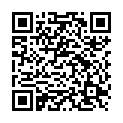|
|
|
| Module code: MAA-2.x.10 |
|
2PA (2 hours per week) |
|
3 |
| Semester: 1 |
| Mandatory course: yes |
Language of instruction:
German |
Assessment:
Student research project
[updated 30.07.2021]
|
MAA-2.x.10 Architecture, Master, ASPO 01.10.2012
, semester 1, mandatory course
|
30 class hours (= 22.5 clock hours) over a 15-week period.
The total student study time is 90 hours (equivalent to 3 ECTS credits).
There are therefore 67.5 hours available for class preparation and follow-up work and exam preparation.
|
Recommended prerequisites (modules):
None.
|
Recommended as prerequisite for:
|
Module coordinator:
Prof. Dipl.-Ing. Klaus-Dieter Köhler |
Lecturer:
Prof. Dipl.-Ing. Klaus-Dieter Köhler
[updated 29.10.2013]
|
Learning outcomes:
Learning outcomes are: After successfully completing this module, students will be familiar with and be able to develop strategies for complex architectural and constructive structures from the fields of bionics and lightweight construction. In this context, students will have improved their knowlegde about constructive and engineering approaches in particular through research and their project. Students will be familiar with the creative and conceptual connections between architectural design, the load-bearing structure, building construction, ecology, economy, design and art in order to be able to develop independent and innovative architectural designs and constructive implementation methods. They will be familiar with structural design, understand complex load-bearing structures, bionic analogies, analogy research and construction. Ecology and economy play an essential role in this.
In addition, they will be able to discuss interdisciplinary questions of (civil) engineering, bionics and design that go beyond their previous architectural education.
[updated 30.07.2021]
|
Module content:
In the module Bionics and Lightweight Construction, complex tasks from the fields of architecture, engineering and construction will be discussed in depth, taking into account all relevant boundary conditions.
Some of these are, for example: Building construction with special emphasis on special constructions - bionics and lightweight construction (membrane construction, shell construction, etc.) Some of our topics will be: Internationality, project development, ecology and economy, fine arts, design and media.
The module hopes to convey the desire to research in the fields of structural planning, construction and design.
The overriding goal is to expand students’ architectural horizon by way of a complex, interdisciplinary approach and based on requirements from the fields of bionics and lightweight construction. In this context, international tasks, nationally and internationally renowned lecturers and guest critics, as well as lectures in German, English and French will play an essential role. Interdisciplinary exchange is an important goal in this module.
[updated 30.07.2021]
|
Teaching methods/Media:
Lecture and tutorials
[updated 30.07.2021]
|
Recommended or required reading:
Will be announced in the course
[updated 30.07.2021]
|


